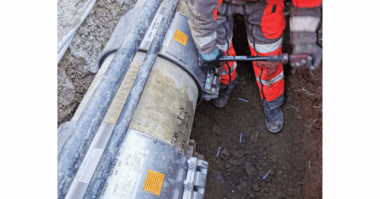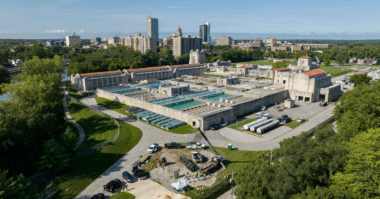To men of a certain age, the word “lagoon” conjures two very different images. In the first, it’s the Creature from the Black Lagoon—a scary gill-man emerging from the ooze. In the other, it’s the idyllic Blue Lagoon, with Brooke Shields frolicking in an island fantasyland.
The word “lagoon” in the wastewater realm hints at similar dissonance. Just the wording that industry uses to describe its mass wastewater containment hints at how we try to bury our mixed feelings beneath language. If trying to convey the tropical paradise sense of “lagoon” doesn’t work, some people call them “ponds,” as if we’re going to spend a day on the bank fishing for sunfish and perch.
Call them what you will. But recognize that on one hand, wastewater lagoons are kind of scary. Rife with noxious odors, churning out greenhouse gases, breeding mosquitoes in a West-Nile-virus kind of world, and constantly at risk of leakage or overflow to contaminate both groundwater and surface water, they’re the ultimate in decentralized water treatment systems.
And in many cases, using the word “treatment” is probably pretty generous: much of the traditional goal with lagoons is to use them as settling basins—a “liquid landfill,” if you will. That’s what really scares an engineer in the water business: there is often so little control of treatment processes in wastewater lagoons.
Put that all together and it’s easy to see why wastewater lagoons are the biggest liability in the industrial watershed. They’ve got massive footprints, huge volumes and long, long lives. If that doesn’t haunt your nightmares, maybe it should.
It doesn’t have to be that way. Wastewater lagoons can be more than a dirty little (or big) secret—they can be resource repositories, sources of water, energy, nutrient-rich biosolids and minerals. We just have to adjust our thinking and tap into treatment technologies that allow us to access those resources. We’ve got to take control of lagoons and create the proper environment for these complex biological and chemical ecosystems to function in a healthy manner.
We’ve got the technology. Aeration seems simple enough, but getting proper flow of dense suspensions requires great design and proper equipment. So does choosing an aeration system, particularly one that is both effective and efficient, and requires minimal maintenance. Fortunately, computational fluid dynamics (CFD) allows us to model the behavior of fluids and design treatment systems that can reduce energy demand and optimize the turbulence and mixing required for success.
Once we’ve got the treatment underway, can we harvest the resources? Reuse the wastewater and collect the minerals or nutrients? Once we start thinking that way, the sky is the limit.
When I look at a barely managed wastewater lagoon, I see a Black Lagoon. There’s the lurking threat of regulatory or environmental problems—problems that limit the resiliency of the whole business. The gill-man isn’t going to rise from the depths to steal women, but he could reach out and choke off your company.
On the other hand, a well-managed wastewater lagoon may never attract the likes of Brooke Shields to skip along its shores…but it can be a lot more of a Blue Lagoon.




